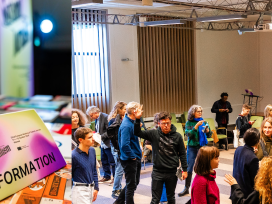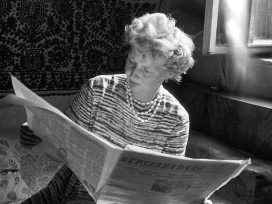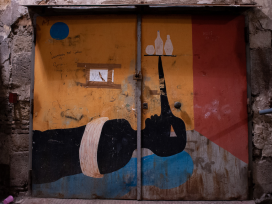What is the relation between transgression and ephemerality? Is the ephemeral transgressive by virtue of being ephemeral? Is ephemerality a threat to the stability of things or, paradoxically, the very engine of stability?
In fact, transgression, ephemerality and utopia were uniquely connected in the 1960s and 1970s. One could even say that what was radical about that moment is that these three concepts were almost synonymous. You have ephemeral little magazines describing almost immaterial utopian worlds in a time of extreme political unrest. Bloody struggle in the street was combined with otherworldly utopias in the pages of disposable magazines. Images of light, airy, equitable, recyclable, inflatable, mobile, networked, throwaway architecture, or maybe anti-architecture, may even have been in the pockets of people that were fighting on the barricades. Utopia was not isolated from political struggle. It was built in. Images of protest and images of new worlds often coexisted on the pages of the little magazines in architecture of the 1960s and 1970s.

Le Carré Bleu, 3 (1968)
What to make now of these fragile documents that have ended up in the archives, detached from the battlefield? What kind of history do we write? Especially since the people that produced these magazines saw themselves in a historical context: the little magazines of the 1960s were a self-conscious echo of the avant-garde magazines of the 1920s.
Little magazines are always a small utopia, a mass-produced portable universe. Architects use little magazines as an experimental space in which projects are produced and the images dispersed around the world in multiple copies are more important than any one project constructed in the streets. Even the designed space of those pages is itself a key collaborative project that circulates as a provocation, a campaign against the norm. The form is the content.
The history of the avant-garde in art, in architecture and in literature, can’t be separated from the history of its engagement with the media. And it is not just because avant-gardists used media to publicize their work. Their work simply didn’t exist before its publication.
Futurism didn’t really exist before the publication of the Futurist manifesto in Le Figaro in 1909. Adolf Loos didn’t exist before his polemic writings in the pages of newspapers and in his own little magazine Das Andere (1903). Le Corbusier didn’t exist before his magazine L’Esprit Nouveau (1920-25) and the books that came out of its polemical pages (Vers une architecture, Urbanisme, L’art decoratif d’aujourd’hui, Almanach). He became known as an architect and created a clientele for his practice through these pages. Even the name Le Corbusier was a pseudonym used for writing about architecture in L’Esprit Nouveau. In that sense, one can argue that Le Corbusier was an effect of a little magazine. Even an architect like Mies van der Rohe, who is primarily thought in terms of craft and tectonics, didn’t really exist without G, the journal that he was part of, and the many little magazines to which he contributed, from Frühlicht to Merz.
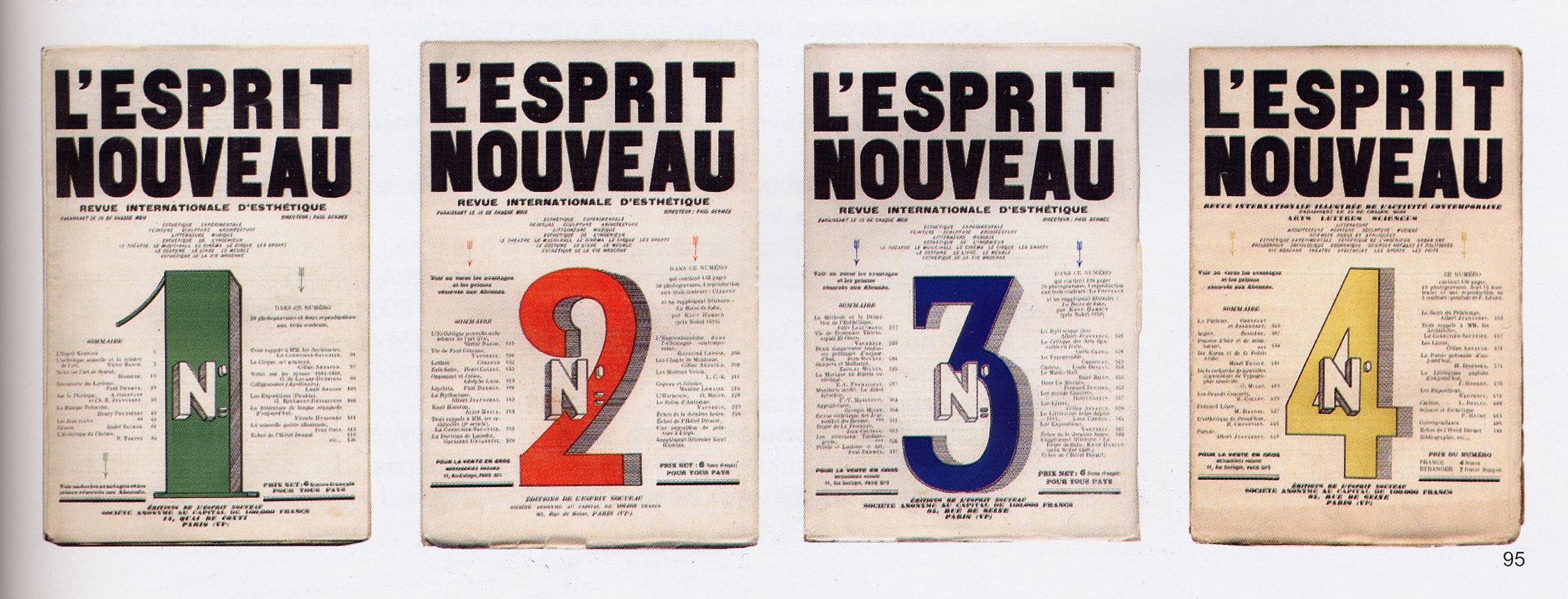
L’Esprit Nouveau 1, 2, 3, 4
These magazines didn’t report on the world. They incubated whole new worlds, offering glimpses of societies living under completely different physical, social and intellectual rules. Each little magazine is a portable utopia, a space unrestrained by conventional logic. It perforates the real world with alternative visions, a puncturing of the real whose effect is multiplied by the repetition of each printed copy, the regular rhythm of serial production, and the viral spreading of images shared between magazines. Free of the constraints of gravity, finance, social convention, technical assumptions, hierarchies, and responsibilities, the ever-widening network of little magazine brings forth a new architecture. The portable utopia becomes a real construction site.
The portable utopia is not just a container of dreams. The little magazine is itself an artwork, an architecture crafted with the same precision as any design object. It is a multiple produced by a collaborative team of artists/architects. Magazines are all about repetition. They hit again and again. And they keep moving. Like a boxer. This relentless logic of the multiple infects the projects being promoted. Modern architecture literally takes form in the world as a multiple. The design that appears a thousand times in the issue of a magazine ends up being reproduced globally. Experimental multiples by artists-architects become mass produced norms.
The architect as artwork
Mies is a classic example. His place in architectural history, his role as one of the leaders of the modern movement, was established through a series of five projects (none of them actually built, or even buildable – they were not developed at that level). He produced them for competitions and publications during the first half of the 1920s: the Friedrichstrasse Skyscraper of 1921, the Glass Skyscraper of 1922, the Reinforced Concrete Office Building of 1923, and the Concrete and Brick Country Houses of 1923 and 1924. These projects were inseparable from the magazines in which they appeared. The layout of the buildings and the layout of the pages are interwoven.
It was these five projects, this ‘paper architecture’, together with the publicity apparatus enveloping them, that first made Mies into a historical figure. The houses that he had built so far, and that he would continue to develop during the same period, would have taken him nowhere. While the Riehl house of 1907 was noted by a critic and published in Moderne Bauformen and in Innendekoration in 1910, between the somewhat modest articles about this house and Mies’ own article presenting the glass skyscraper in Frühlicht in 1922, nothing more of Mies’s work was published.
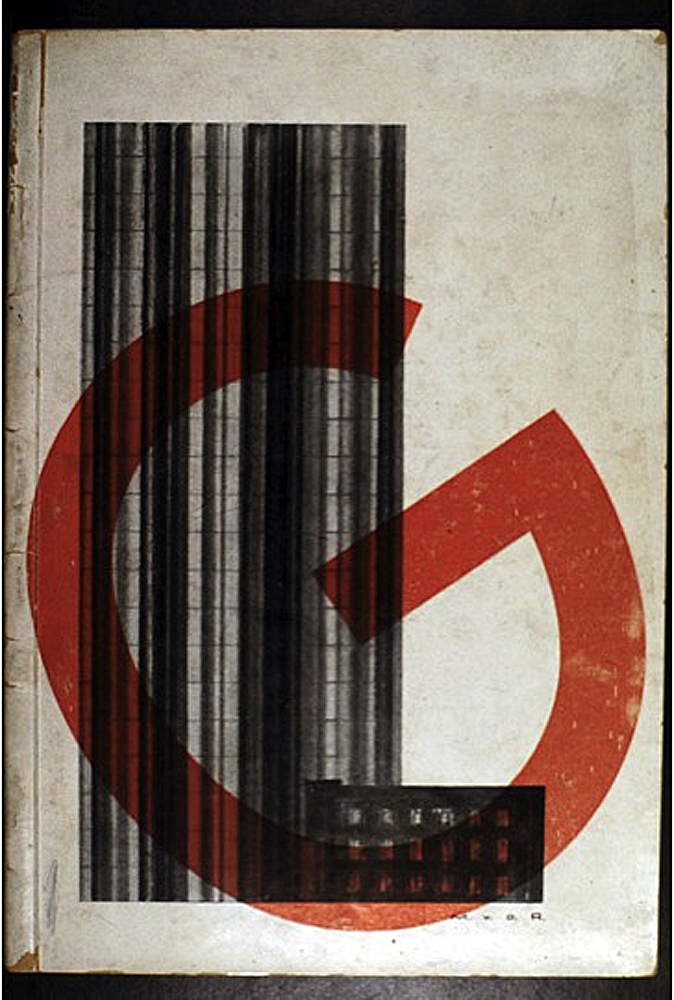
Mies van der Rohe, cover of G magazine 3 (1924), with elevation of Mies’s Glass skyscraper of 1922
Can we attribute this silence, these twelve years of silence, to the blindness of architectural critics of his time, as some historians imply? Mies’s attitude is much clearer. In the mid-1920s he destroyed the drawings of most of his work before that time, thereby constructing a very precise image of himself from which all incoherencies had been erased. (Note the parallelism with Loos, who destroyed all the documents from his projects when he left Vienna for Paris in 1922, and with Le Corbusier, who excluded all his early houses in La Chaux-de-Fonds from publication in his Oeuvre complète.) In 1947, Mies still did not allow Philip Johnson to publish his early work in the monograph that Johnson was preparing as catalogue for the first ‘comprehensive retrospective’ exhibition of Mies’ work at the Museum of Modern Art, and that would constitute the first book on him. ‘Not enough of a statement,’ Mies is supposed to have said about some early houses that Johnson wanted to include. Mies excluded all his more traditional early work up to 1924, with the exception of the project for the unbuilt Kröller-Müller house of 1912–1913, which symptomatically was only a photograph of the 1:1 cloth and cardboard model built on the site in order to persuade the client.
Mies’s work is a textbook case of a wider phenomenon. Modern architecture became ‘modern’ not by using glass, steel, or reinforced concrete, but by engaging with the media: with publications, competitions, exhibitions. The materials of communication were used to rebuild the house. With Mies this is literally the case. What had been a series of rather conservative domestic projects realized for real clients became, in the context of the Berlin Art Exhibition, of G, of Fruhlicht and so on, a series of manifestos for modern architecture.
Not only that, but in Mies one can see, perhaps as with no other architect of the modern movement, a true case of schizophrenia between his ‘published’ projects and those developed for his clients. Still in the 1920s, at the same time when he was developing his most radical designs, Mies could build such conservative houses as the Villa Eichstaedt in a suburb of Berlin (1921–23) and the Mosler villa in Potsdam (1924).
Can we blame these projects on the conservative taste of Mies’s clients? Mosler was a banker and his house is said to reflect his taste. But when in 1924 the art historian and constructivist artist, Walter Dexel, who was very interested in and supportive of modern architecture, commissioned Mies to design a house for him, Mies blew it. He was unable to come up with the modern house his client had desired within the deadline. He gave one excuse after another. The deadline was repeatedly postponed. In the end, Dexel gave the project to another architect. For a long time, then, there was an enormous gap between the flowing architecture of Mies’s published projects and his struggle to find the appropriate techniques to produce these effects in built form. For many years he was literally trying to catch up with his publications. Perhaps that is why he worked so hard to perfect a sense of realism in the representation of his projects, as in the photomontage of the Glass Skyscraper with cars flying by on the Friedrichstrasse.
The utopian space of little magazines acted as the real building site for the production of a whole new Mies. In fact, the only Mies we know. His canonic steel, glass and marble assemblages were actually made possible by the most ephemeral serial publications. It was the repetition of his images and words in an expanded network of such magazines that gave an ever-increasing sense of reality to highly experimental forms, and to Mies himself.
The radical multiple
Even entire groups from De Stijl to Archigram became an effect of their journals. The critic Reyner Banham used to tell a story about a limousine full of Japanese architects that one-day stopped in the street he used to live in London and asked directions to the office of Archigram. But Archigram didn’t exist as a group at the time. Archigram was just a little leaflet produced in the kitchen of Peter Cook, who lived across the street from Reyner and Mary Banham. Only later did the loose group of young architects (Peter Cook, Mike Webb, Dennis Crompton, Ron Herron and David Greene) call themselves Archigram, after their magazine, as in tele-gram, architecture as a communication system.
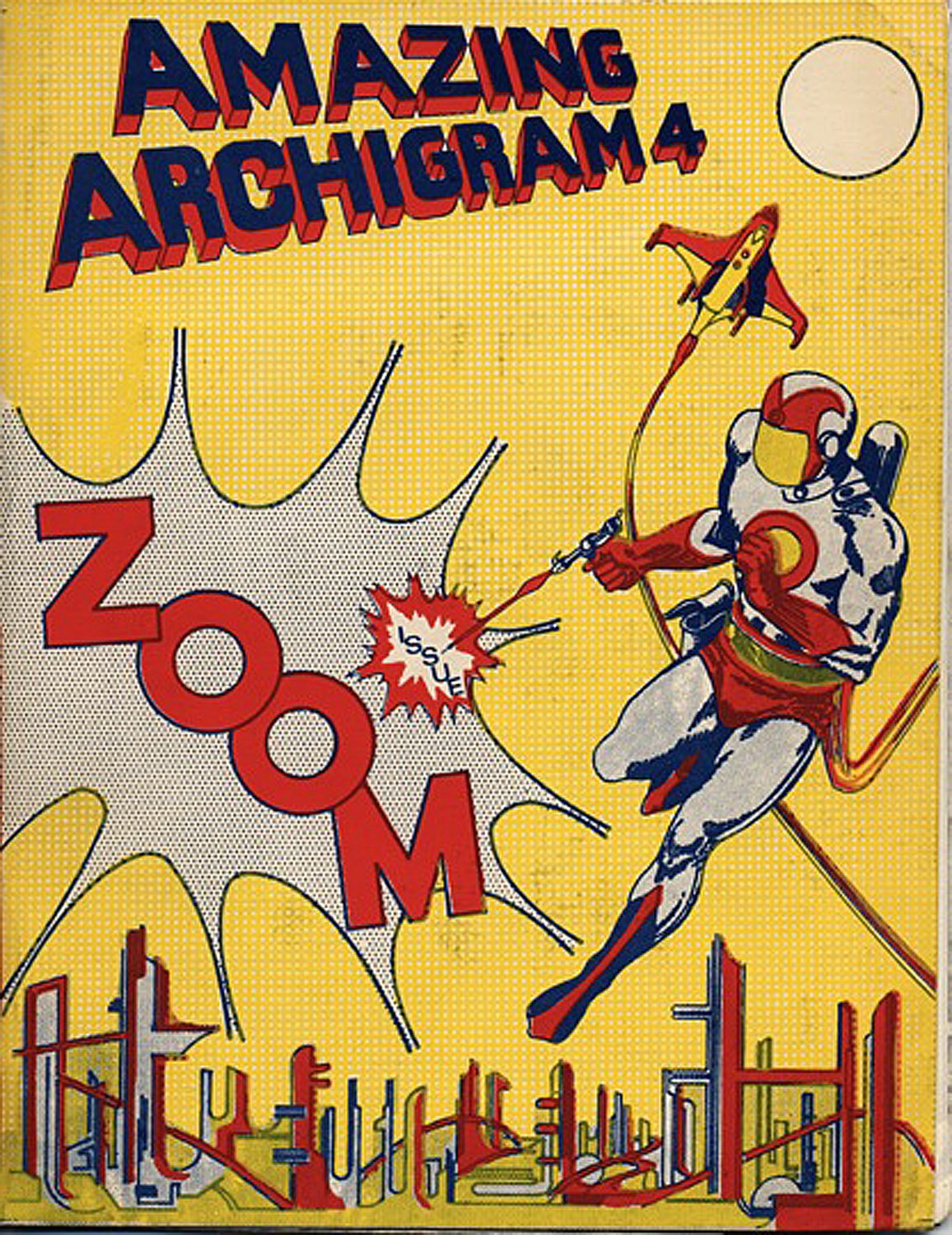
Archigram 4 (1964)
In the 1960s and ’70s there was an explosion of architectural little magazines, which instigated a radical transformation in architectural culture. You can argue that, during this period, little magazines – more than buildings – were again the site of innovation and debate in architecture. Banham could hardly contain his excitement. In an article entitled ‘Zoom Wave Hits Architecture’ of 1966, he throws away any scholarly restraint and absorbs the syncopated rhythms of the new magazines in a kind of futurist ecstasy:
Wham! Zoom! Zing! Rave! – and it’s not Ready Steady Go, even though it sometimes looks like it. The sound effects are produced by the erupting of underground architectural protest magazines. Architecture, staid queen-mother of the arts, is no longer courted by plush glossies and cool scientific journals alone but is having her skirts blown up and her bodice unzipped by irregular newcomers, which are – typically – rhetorical, with-it moralistic, mis-spelled, improvisatory, anti-smooth, funny-format, cliquey, art-oriented but stoned out of their minds with science-fiction images of an alternative architecture that would be perfectly possible tomorrow if only the Universe (and specially the Law of Gravity) were differently organized.
If little magazines drove the historical avant-garde of the 1920s, the 1960s and 1970s witnessed a rebirth and a transformation of the little magazine. New kinds of experimental publications acted as the engine for the period, generating an astonishing variety and intensity of work. In recent years there has been a huge interest in the experimental architecture of this time, from Archigram, the Metabolists, Antfarm, Superstudio, Archizoom, Haus Ruker Co, etc. dubbed ‘Radical Architecture’ by Germano Celant in 1972. But the little magazines that were the real engine of that revolution have been for the most part neglected.
‘Little magazine’ is an Anglo-Saxon term first used to describe small avant-garde literary publications, such as Margaret Anderson’s Little Review of the 1910s and 1920s. These were dedicated to progressive theory, art and culture. Their non-commercial operations and small circulations set them apart from established periodicals. But they aimed to influence the dominant periodicals, claiming to be ‘the magazines read by those who write the others’, as Anderson put it. The term was transplanted to architecture in the 1970s by Denise Scott-Brown, who used it to describe magazines like Archigram and Clip Kit, in an insightful review article.
‘Little magazines’ in architecture refer to small circulation, self-published magazines, often difficult to obtain and produced with little or no support, on kitchen tables or in the backrooms of schools. The phenomenon is pivotal both for the physical and intellectual objects produced and as something that functioned as a networked, interactive and international platform for experimental design and discourse. Little magazines operate as an infrastructure for hosting change. One can even consider, as Denise Scott-Brown has suggested, ‘little magazine phases in architecture’ appearing ‘when a debate has expanded enough to demand organization and a rudimentary mailing system’. Little magazines have to be analysed as systems. Their littleness and ephemerality is directly related to the wide spread and resilient network in which they appear.
Professional magazines can be considered ‘little’ for certain periods of time. Changes in the magazines’ economic model and editorial policy are reflected in everything from the types of paper and printing methods used, to the kinds of projects featured in their pages. Conversely, we may see the ‘littleness’ of a self-published, small circulation magazine disappear as publication numbers and circulation expand. Littleness is fleeting and improvised. The publications remain the surprisingly permanent but almost invisible record of the pulse of a moment.
For example, in the mid-1960s and 1970s, Architectural Design with Peter Murray and Robin Middleton as technical editors decided to drop advertising, to change the paper quality and to start publishing the same kind of work that little magazines were publishing, especially in a section called ‘Cosmorama’, printed on cheap, non-glossy, colored, rough paper and dedicated to ecology, counter-culture, new materials, electronic technology, mobility and disposability. This is what can be called ‘moments of littleness’ in big magazines, which are a crucial part of this phenomenon and include the Casabella of Alessandro Mendini (1970–76), the Bau of Hans Hollein, Günter Feurstein and Walter Pichler (1965–70), the Domus of Gio Ponti (1970s), or the Aujourd’hui: Art et architecture of André Bloc (1955–1967). If Margaret Anderson wanted the big publications to read the little ones, here the logic of the little magazines had been absorbed into the big magazines, like a Trojan horse, and would ultimately leak out across the wider landscape.
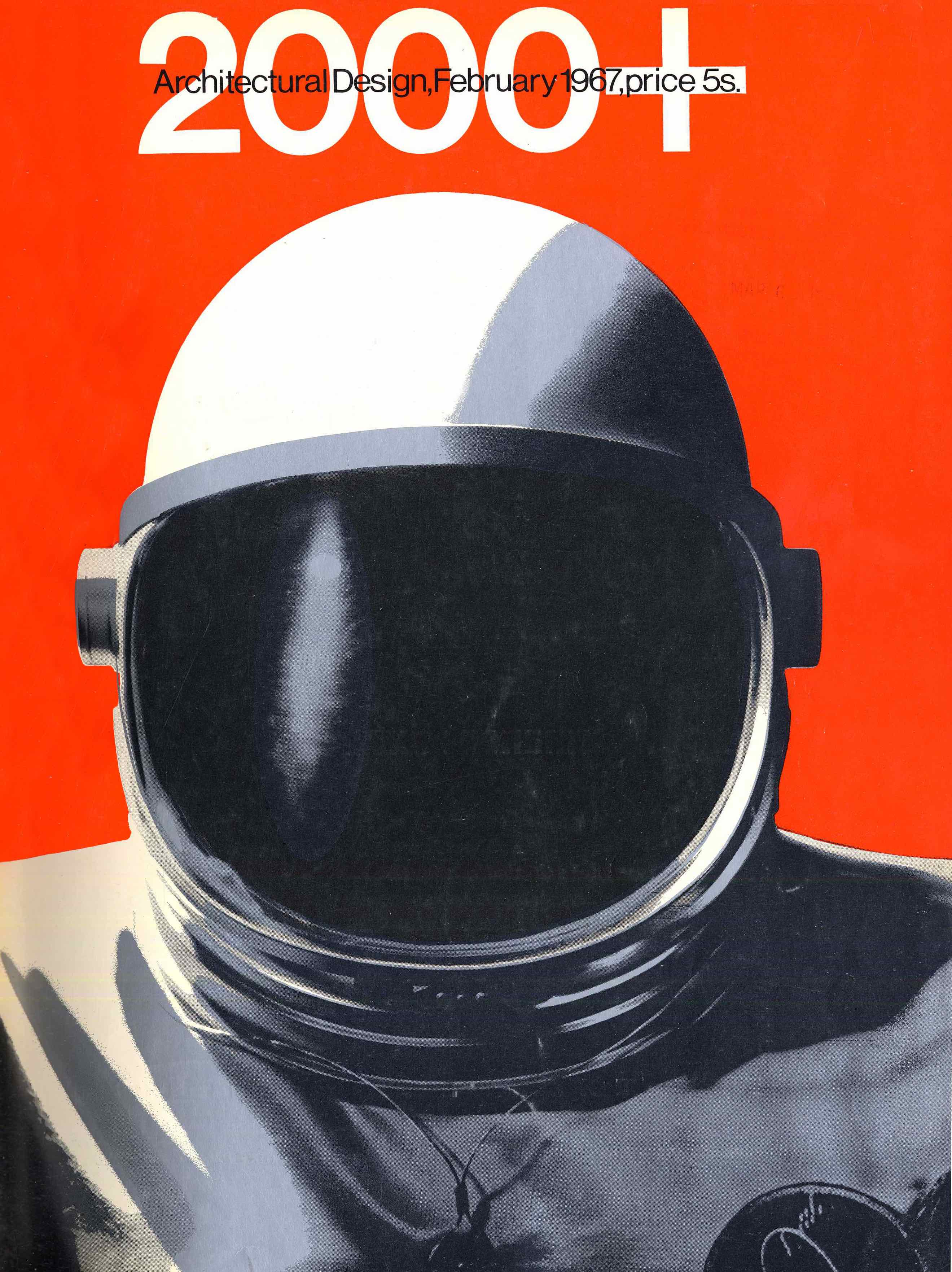
Architectural Design, February 1967
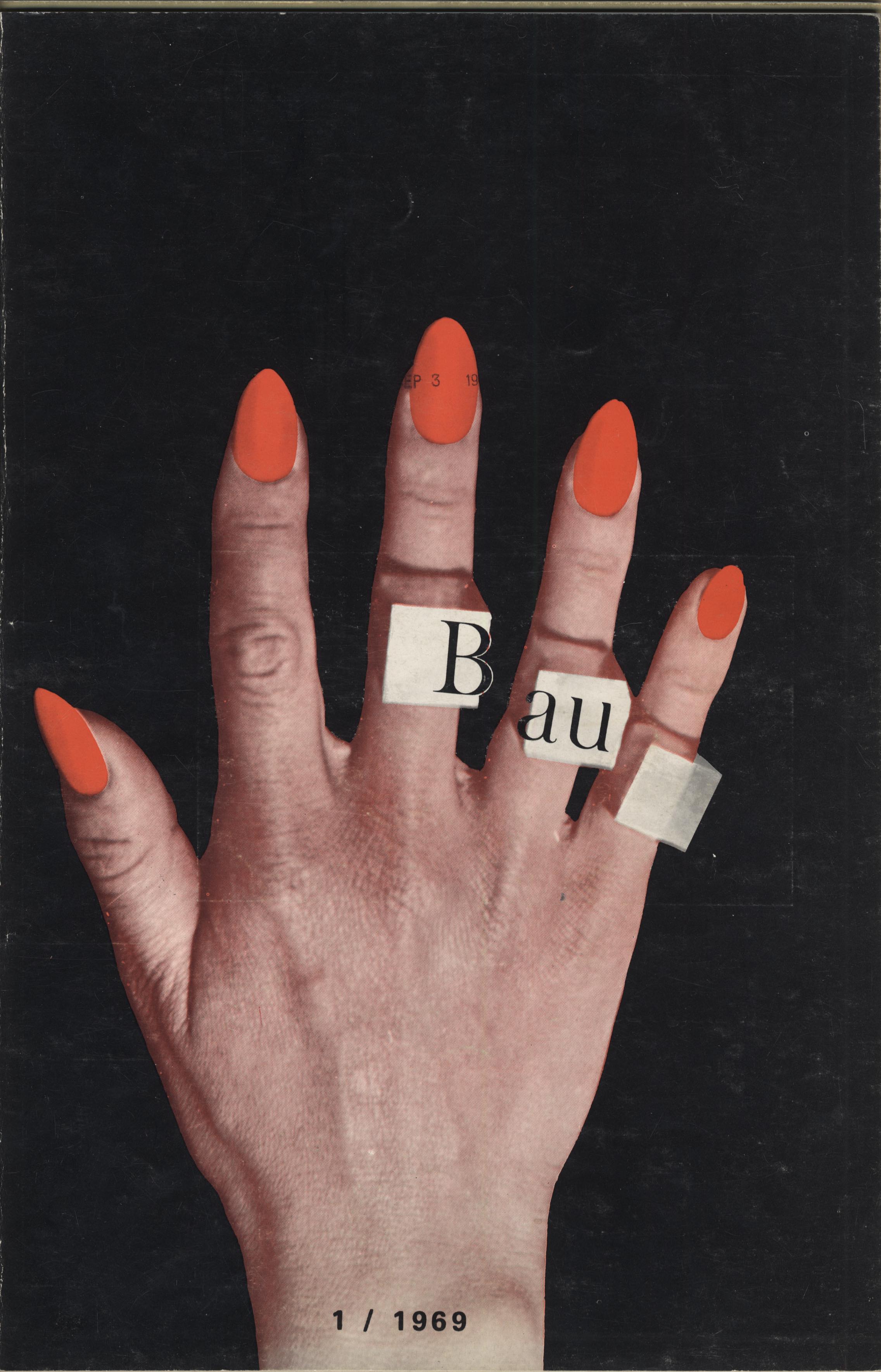
Bau, January 1969
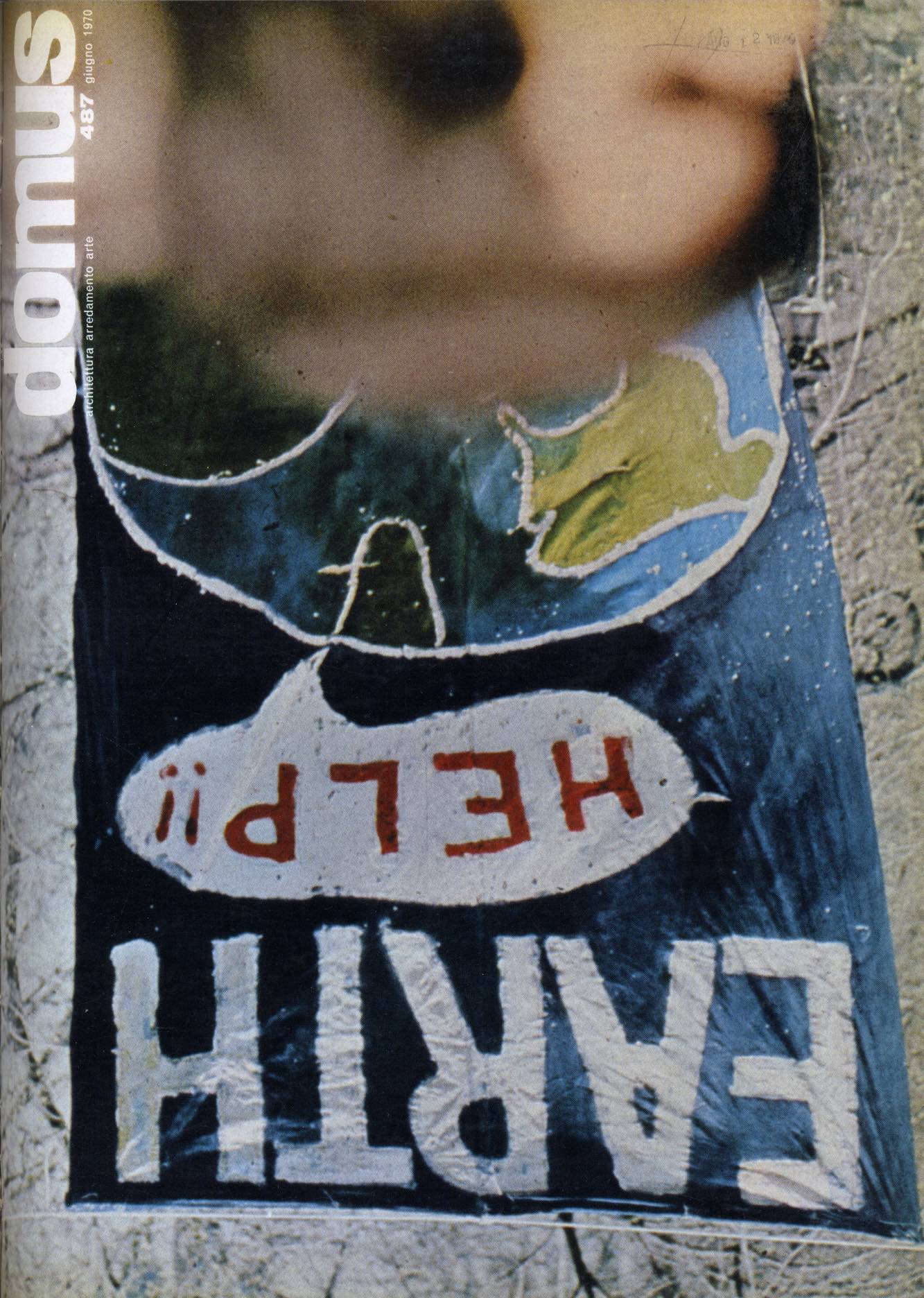
Domus, 487 (1970)
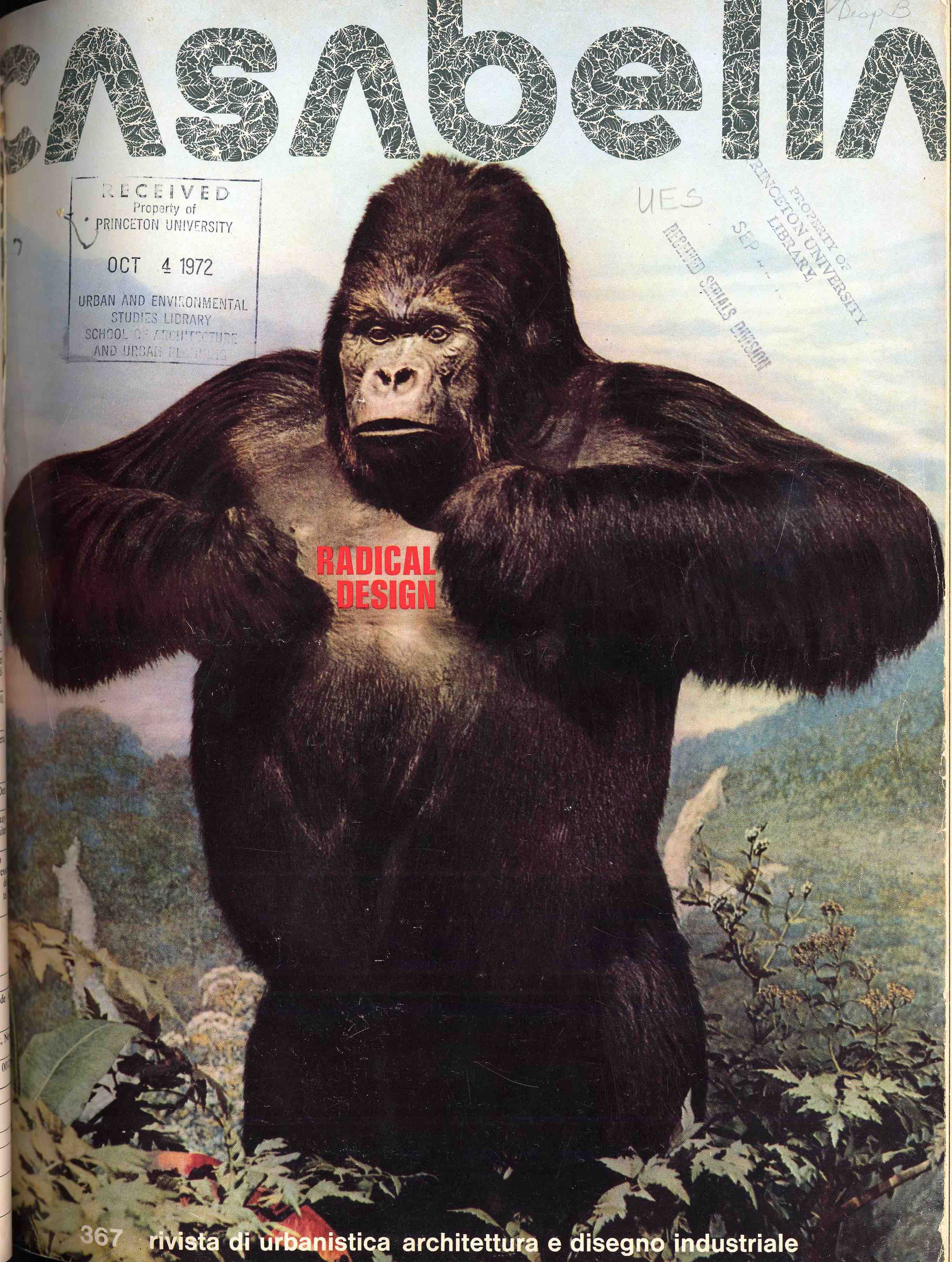
Casabella 367 (1972)
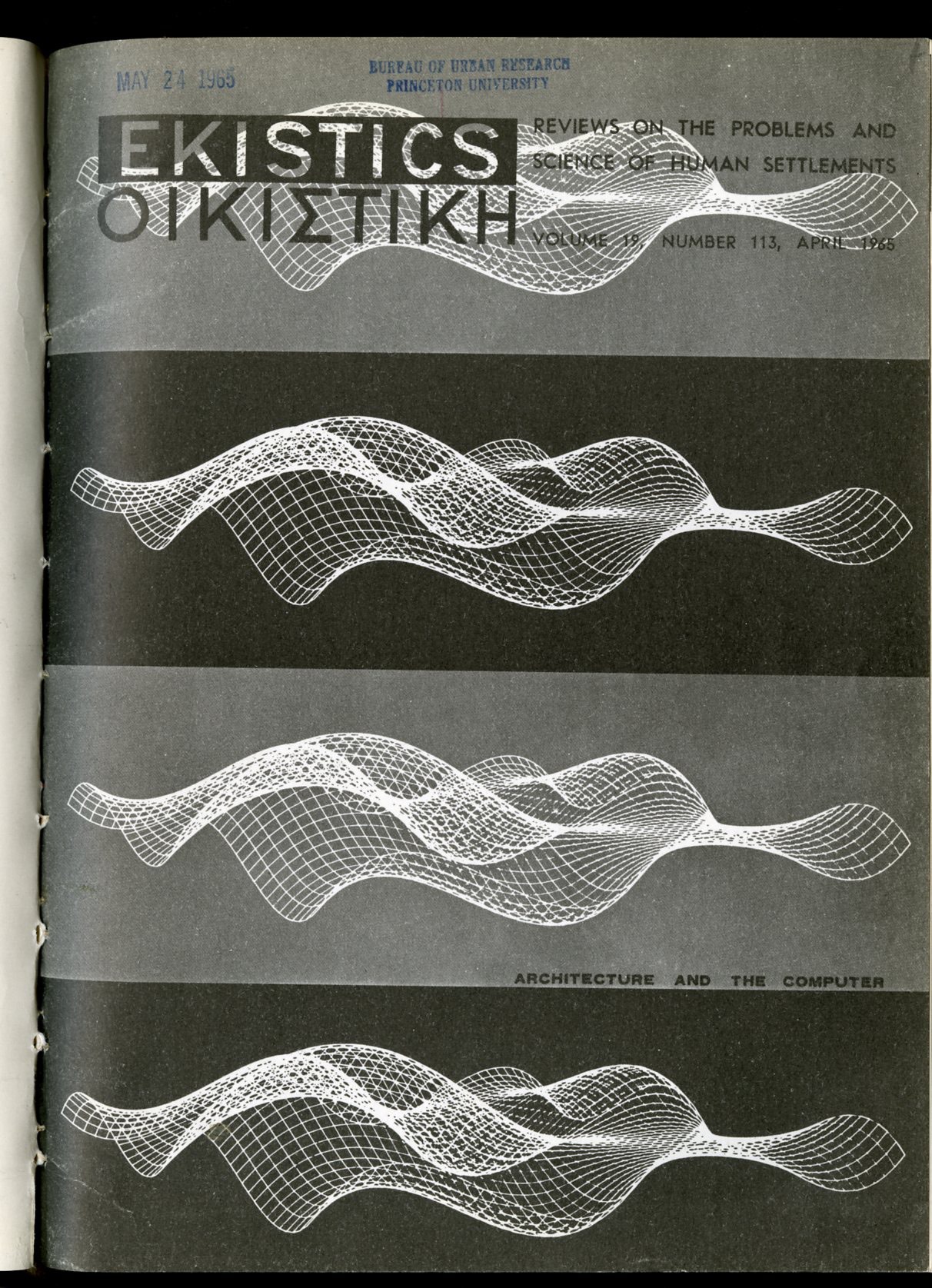
Ekisctics, April 1965
There has been some kind of amnesia about this exuberant moment. Even the protagonists, the editors and architects involved in the production of these magazines seem to have forgotten how amazing, dense and explosive that moment was. While often referred to in passing, the little magazines were soon scattered in libraries, archives and private collections as the discourse moved on. Bringing them back to light today exposes both the key arguments of that time, but also the crucial role played by a medium that fostered and disseminated these polemical positions. With today’s discourse incorporating a whole wave of ephemeral communication systems, this earlier shift of technology suddenly snaps into focus.
What made this explosion possible? The rise of new and low-cost printing technologies such as portable mimeograph machines and offset lithography in the early 1960s was of crucial importance. Not only did these technologies make printing accessible to more people, they enabled entirely different methods for assembling publications. The page could now be prepared on the drawing board or the kitchen table, rather than at the compositors print-bed. In this new informal space, architects could clip and recombine materials from a variety of sources, and experiment with the effects of juxtaposition and scaling, the mobility of transfer lettering, the properties of lithographic color, etc. In fact, there is a relation between the production of architectural concepts in those years and the different production techniques used to create the publications themselves. Not by chance, Clip Kit takes its name and unique format from the concept of Clip-on architecture that it promoted in its pages, having picked up the concept from Banham’s reading of Archigram. Likewise the pop-up technique of the Archigram Zoom issue unconsciously communicates their polemic for instant architecture – medium and message are inseparable.
These innovative and energetic publications helped form a global network of exchange amongst students and architects, but also between architecture and other disciplines. Interconnections and shared obsessions between different magazines built a formidable network of little publications, collaborating as a single intelligent organism testing the limits of architecture. Everything but architecture in the conventional sense of a building, or the architect in the conventional sense. Look at the covers: you rarely see the image of a building or the face of an architect. At the moment at which Hollein famously claimed that ‘everything is architecture’, everything but architecture is splashed across the covers of radical magazines in an orgy of intense and sophisticated graphic design, a collaborative utopia acting as an incubator of new ways of thinking and a key arena in which the emerging problems facing architectural production could be debated.
Early warning systems
Within this utopian marginal space, a series of themes were explored as the basis of a hypothetical improved society. The are the very themes that are today at the very center of the contemporary global reality. Indeed, practically all the themes that preoccupy us now emerged during those years. You find the first preoccupations with recycling, with energy responsibility, cardboard architecture, emergency architecture, synthetic materials, digital data flow, global mobility, the first oil crisis, the emergence of computers, machine intelligence, polymers, terrorism… The list of concerns acts as an umbilical cord between the 1960s and today.
- The space program acted as a catalyst for dreaming of new social and architectural problems. The mobilization of a vastly expanded sense of scale in outer space was counter posed by miniaturization, a fascination with the new existence-minimums of the sealed capsule and the space suit. The launch of satellite communications generated an enthusiasm for planetary interconnection, as well as a concern about the expansion of forms of political and intellectual power beyond traditional territorial limits. Little magazines extrapolated from the scientific facts of the space program to conjure up a series of science fictions about the future evolution of buildings and cities.
- The cybernetic understanding of communications and feedback-control processes in biological, mechanical, and electronic systems coming out of World War II likewise prompted experimental scenarios in which information itself would become the basic building material. Computation and the relationship of hardware to software were seen to liberate new urban and biological realities.
- Emergent ecological concerns were closely tied to a rethinking of the condition of the house and its natural, urban, and global economies. The house was re-conceptualized in terms of ‘whole earth systems’, which entailed the recycling of both material and energy, and hybrid systems of natural and artificial elements. A more extreme and radical response encouraged a retreat to self-sufficient shelters in nature, autonomous from established communities. Architectural magazines found themselves in an incredibly intimate dialog with a wide range of counter publications. Self-help manuals (Whole Earth Catalog, Dome Cook Book, Shelter, Farallones Scrapbook) featured architectural design and architectural magazines featured self-help techniques.
- The emergence of protest movements around the globe in the 1960s was paralleled by critiques of architecture in little magazines. The architectural object was devalued in favor of questions of self-organization, urban sociology, and participation. This wider expression of political protest and self-questioning was fostered in different ways by many little magazines around the globe. In some cases we find specific issues devoted to protest movements and to instances of brutality against demonstrators (Architectural Design, Arquitectos de Mexico, Architecture Mouvement Continuité, Casabella, Le Carré Bleu, Perspecta). Other magazines became vehicles for student demands for reforms in architectural education (Melp!, Klubseminar, ARse, Arquitectura Autogobierno). In other magazines, this critical self-questioning contributed to the formulation of ideological and historical critiques of architecture’s role within culture (Angelus Novus, Carrer de la Ciutat, Contropiano, Utopie).
- The 1960s and 1970s also saw the rise of what is understood today as architectural ‘theory’. Magazines like Oppositions, Arquitecturas bis, Lotus, etc. launched a whole new kind of discourse. They cultivated a general philosophical and historical self-consciousness. These magazines often modeled themselves on the avant-garde magazines of the 1920s and 1930s, giving the contemporary theorist the status of a radical artist. Peter Eisenman, for example, claims to have started Oppositions because he felt there was never an avant-garde in the USA and that a magazine was the necessary vehicle for it.
- All these utopian speculations in little magazines about miniaturization, information, computation, sexuality, ecology, radical politics, philosophy, etc. resonate today in obsessions with sustainability, the occupy movement, digital culture etc. The issues of the little magazines of the 1960s and 1970s have migrated to the mass media. As with the historical avant-garde, the seemingly unrealistic medium of the little magazine calibrated to the micro-experience of its serial repetition acts as the generator of a new mass reality. Utopia becomes palpable.
New media today brings new portable utopias. A new generation is perforating the world with the ever-evolving technologies of social media. The logic of the multiple is being taken to a whole new extreme. Serial repetition gives way to viral exchange. Nothing is little anymore.
This essay is prepublication from the forth coming collection The Legacy of Transgressive Objects (ed. Katja Müller-Helle), including contributions by Beatriz Colomina, Tacita Dean, Dennis Göttel, Helmut Lethen, Jeannie Moser, Katja Müller-Helle, Eva Wilson, Claus Pias. Forthcoming from August Verlag, Berlin, in September 2018.














